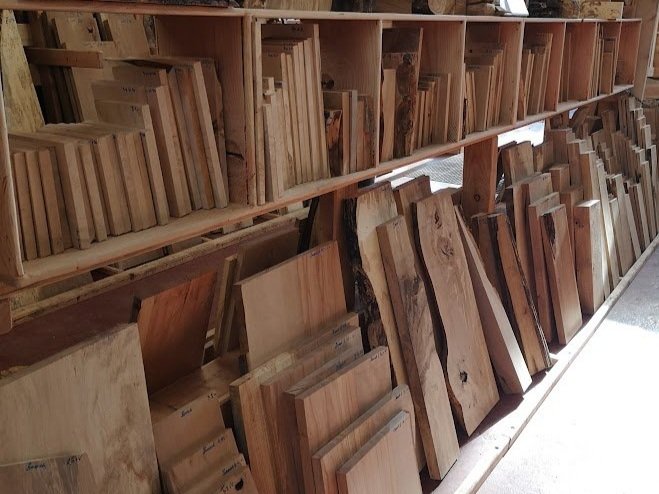From Tree to Table: Where My Wood Comes From
When I started woodturning, I wasn’t just drawn to the shapes, I was drawn to the source.
Where the wood comes from matters.
Local hardwoods with a past
Most of my wood comes from Scotland. Where possible I try to ensure I have picked the timber myself, from timber yards within an hour of my workshop. The native hardwoods I use most include:
Sycamore: Pale, creamy, and smooth. A favourite for clean forms.
Ash: With a strong grain and plenty of character.
Oak: Rich, traditional, and tactile.
English Walnut: Dark, luxurious, and very limited.
Spalted Beech: Full of personality and surprises.
Each piece has its own story, Sometimes I know it, sometimes I don’t. But I always approach it with care.
Where I get my wood
I work with several suppliers whom I trust. Establishments that understand the importance of sustainability and provenance:
Scottish Wood in Fife – A social enterprise supplying Scottish hardwoods from local sources, with profits supporting conservation and communities.
The Wood Place in South Lanarkshire – A family-run business offering properly seasoned British hardwoods, specialising in kiln-dried timber.
WP Hardwoods in Aberdeenshire – A small family business promoting sustainable woodland management by sourcing native Scottish hardwoods.
Dalmaan UK in England – An importer and retailer of both exotic and British turning timbers, committed to sustainable forest management and reforestation.
Each of these suppliers provides responsibly sourced hardwoods. Sometimes windfallen, reclaimed, or sourced from managed woodlands.
Why I avoid imported exotics
There’s enough beautiful wood here in the UK. I don’t need to fly in tropical species that may have been logged unsustainably.
Imported woods can be beautiful, but they often come with hidden costs. Environmental, ethical, and ecological.
Working with native trees makes more environmental and emotional sense. It connects me to the land I live on.
The challenges and rewards
Locally sourced wood can be unpredictable.
It might warp or crack. It often needs extra drying time. But that’s part of the joy. Working with it, not against it. Every piece of timber is a challenge and an opportunity.
Small batch, slow making
I only have the capacity to work in small batches. #
That slow pace means I can use unusual pieces of wood that wouldn’t suit mass production.
Nothing gets wasted. Offcuts become test pieces, smaller forms, or fuel.
Waste is minimal because I know the value of every inch.


